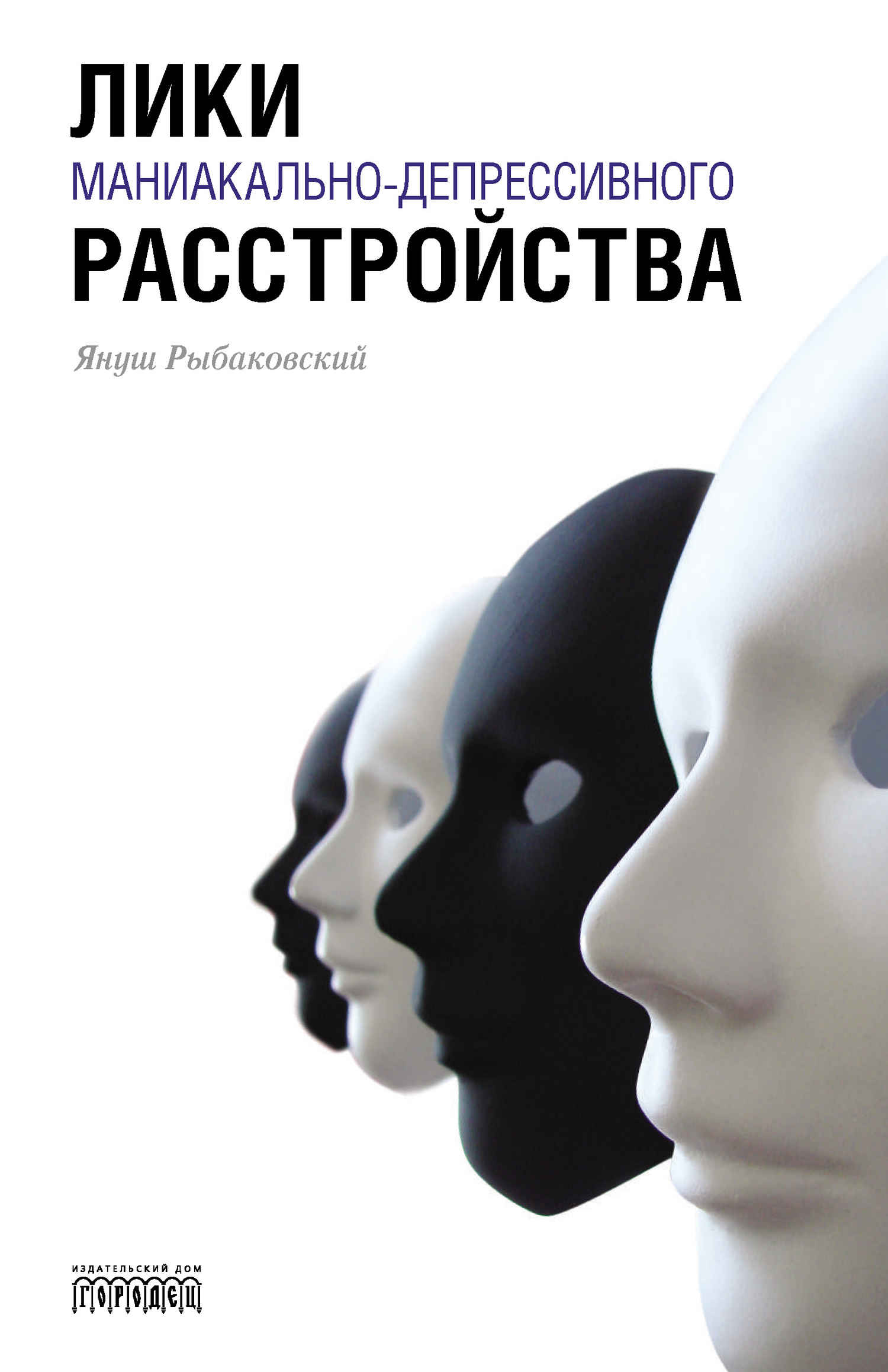a randomized, open-label, pilot study. Journal of Clinical Psychiatry 2007; 68: 10711077.
73. Dunner D.L., Fieve RR. Clinical factors in lithium carbonate prophylaxis failure. Archives of General Psychiatry 1974; 30: 229–233.
74. Dunner D.L., Gershon ES, Goodwin F.K. Heritable factors in the severity of affective illness. Biological Psychiatry 1976; 11: 31–42.
75. Egeland J.A., Gerhard D., Pauls D.L. et al. Bipolar affective disorders linked to DNA markers on chromosome 11. Nature 1987; 325: 783–787.
76. Einat H., Yuan P Szabo ST et al. Protein kinase C inhibition by tamoxifen antagonizes manic-like behavior in rats: implications for the development of novel therapeutics for bipolar disorder. Neuropsychobiology 2007; 55: 123–131.
77. Falret J-P. Memoire sur la folie circulaire, forme de la maladie mentale caracterisee par la reproduction successive et reguliere de l’etat maniaque, de l’etat melancolique, et d’un intervalle lucide plus ou moins prolonge. Bulletin de l’Academie imperiale de medecine, Paris, 1854; 19: 382–400.
78. Figueroa C.G. Virginia Woolf: enfermedad mental y creatividad artistica. Revista me dica de Chile 2005; 133: 1381–1388.
79. Flaherty A.W. Frontotemporal and dopaminergic control of idea generation and creative drive. Journal of Comparative Neurology 2005; 493: 147–153.
80. Flaherty A.W. The Midnight Disease: The Drive to Write, Writer’s Block, and the Creative Brain. First Mariner Books, Boston – New York, 2005.
81. Folley B.S., Park S. Verbal creativity and schizotypal personality in relation to prefrontal hemispheric laterality: a behavioral and near-infrared optical imaging study. Schizophrenia Research 2005; 80: 271–282.
82. Frank E., Kupfer D.J., Thase M.E et al. Two-year outcomes for interpersonal and social rhythm therapy in individuals with bipolar I disorder. Archives of General Psychiatry 2005; 62: 996-1004.
83. Frazer A, Winokur A. (red.). Biologiczne podstawy zaburzen psychicznych. Panstwowy Zakiad Wydawnictw Lekarskich, Warszawa, 1982.
84. Freud S. Trauer und Melancholie. Fischer, Frankfurt, 1917.
85. Freud S., Breuer J. Studien über Hysterie. Franz Deuticke, Leipzig – Wien, 1895.
86. Garrod A.B. Gout and Rheumatic Gout. Walton and Maberly, London, 1858.
87. Gartner J.D. The Hypomanic Edge: The Link between (a Little) Craziness and (a Lot of) Success in America. Simon & Schuster, New York, 2005.
88. Ghaemi S.N., Ko J.Y., Goodwin F.K. The bipolar spectrum and the antidepressant view of the world. Journal of Psychiatric Practice 2001; 7: 287–297.
89. Gibb B.E., McGeary J.E., Beevers C.G., Miller I.W. Serotonin transporter (5-HTTLPR) genotype, childhood abuse, and suicide attempts in adult psychiatric inpatients. Suicide and Life Threatening Behavior 2006; 36: 687–693.
90. Gilbert P. Evolution and depression: issues and implications. Psychological Medicine 2006; 36: 287–297.
91. Glenmullen J. Prozac Backlash: Overcoming the Dangers of Prozac, Zoloft, Paxil, and Other Antidepressants with Safe, Effective Alternatives. Simon & Schuster, New York, 2001.
92. Golimbet V.E., Alfimova M.V., Gritsenko I.K, Ebstein R.P. Relationship between dopamine system genes and extraversion and novelty seeking. Neuroscience and Behavioral Physiology 2007; 37: 601–606.
93. Goodwin F.K., Jamison K.R. Manic-Depressive Illness. Oxford University Press, Oxford, 1990.
94. Goodwin F.K., Jamison K.R. Manic-Depressive Illness. Bipolar Disorders and Recurrent Depression. Second Edition. Oxford University Press, Oxford, 2007.
95. Gould T.D., Chen G., Manji H.K. In vivo evidence in the brain for lithium inhibition of glycogen synthase kinase-3. Neuropsychopharmacology 2004; 29: 32–38.
96. Green E.K., Raybould R, Macgregor S et al. Genetic variation of brain- derived neurotrophic factor (BDNF) in bipolar disorder. British Journal of Psychiatry 2006; 188: 21–25.
97. Greil W., Kleindienst N, Erazo N, Müller-Oerlinghausen B. Differential response to lithium and carbamazepine in the prophylaxis of bipolar disorder. Journal of Clinical Psychopharmaco-logy 1998; 18: 455–460.
98. Grof P. Excellent lithium responders: people whose lives have been changed by lithium prophylaxis. In: Birch NJ, Gallicchio VS, Becker RW (eds.). Lithium: 50 Years of Psycho-pharmacology, New Perspectives in Biomedical and Clinical Research. Weidner Publishing Group, Cheshire, Connecticut, 1999: 36–51.
99. Guilford J.P. The structure of the intellect. Psychological Bulletin 1956; 53: 267–293.
100. Hahn C.G, Umapathy C, Wang HY et al. Lithium and valproic acid treatments reduce PKC activation and receptor-G protein coupling in platelets of bipolar manic patients. Journal of Psychiatric Research 2005; 39: 355–363.
101. Hamilton W.D. Narrow Roads of Gene Land: The Collected Papers of WD. Hamilton. WH. Freeman/Spektrum, Oxford – New York, 1996.
102. Hardoy M.C., Garofalo A., Carpiniello B. et al. Combination quetiapine therapy in the long-term treatment of patients with bipolar I disorder. Clinical Practice and Epidemiology in Mental Health 2005; 1: 7.
103. Hariri A.R., Drabant E.M., Munoz K.E. et al. A susceptibility gene for affective disorders and the response of the human amygdala. Archives of General Psychiatry 2005; 62: 146–152.
104. Hartigan G.P. The use of lithium salts in affective disorders. British Journal of Psychiatry 1963; 109: 810–814.
105. Hauser J., Leszczynska A, Samochowiec J et al. Association analysis of the insertion/deletion polymorphism in serotonin transporter gene in patients with affective disorder. European Psychiatry 2003; 18: 129–132.
106. Hauser J., Leszczynska A, Samochowiec J et al. The association study of a functional polymorphism of the monoamine oxidase A gene promotor in patients with affective disorders. Archives of Psychiatry and Psychotherapy 2002; 4: 9-15.
107. Herbert Z. Pan Cogito. Czytelnik, Warszawa, 1974.
108. Heron J, Jones I, Williams J et al. Self-reported schizotypy and bipolar disorder: demonstration of a lack of specificity of the Kings Schizotypy Questionnaire. Schizophrenia Research 2003; 65: 153–158.
109. Heuser I, Yassouridis A, Holsboer F. The combined dexamethasone/ CRH test: a refined laboratory test for psychiatric disorders. Journal of Psychiatric Research 1994; 28: 341-56.
110. Hirschfeld R.M., Calabrese J.R., Weissman M.M. et al. Screening for bipolar disorder in the community. Journal of Clinical Psychiatry 2003; 64: 53–59.
111. Hirschfeld R.M., Lewis L., Vornik L.A. Perceptions and impact of bipolar disorder: how far have we really come? Results of the national depressive and manic-depressive association 2000 survey of individuals with bipolar disorder. Journal of Clinical Psychiatry 2003; 64: 161–174.
112. Hirschfeld R.M., Williams J.B., Spitzer R.L. et al. Development and validation of a screening instrument for bipolar spectrum disorder: the Mood Disorder Questionnaire. American Journal of Psychiatry 2000; 157: 1873–1875.
113. Hoffmann H. Die Nachkommenschaft bei endogenen Psychosen. Springer-Verlag, Berlin, 1921.
114. Hoppe K.D. Hemispheric specialization and creativity. Psychiatric Clinic of North America 1988; 11: 303–315.
115. Hosak L. Role of the COMT gene Val158Met polymorphism in mental disorders. A review. European Psychiatry 2007; 22: 276–281.
116. Iitaka C., Miyazaki K., Akaike T., Ishida N. A role for glycogen synthase kinase-3beta in the mammalian circadian clock. Journal of Biological Chemistry 2005; 280: 29397-29402.
117. International Classification





